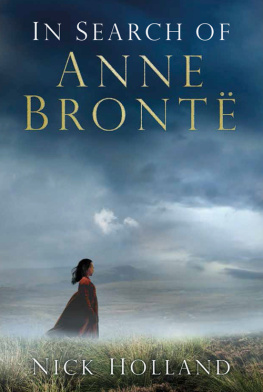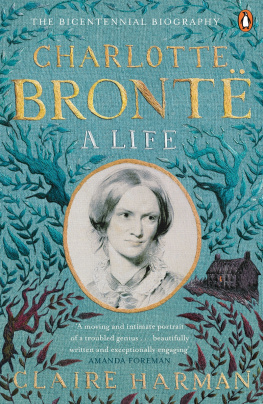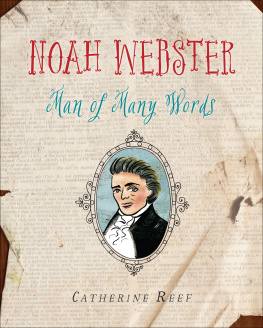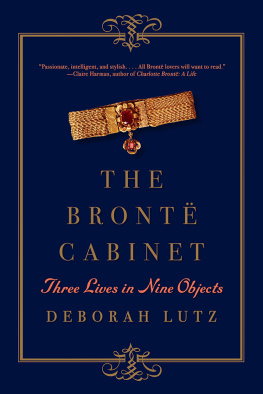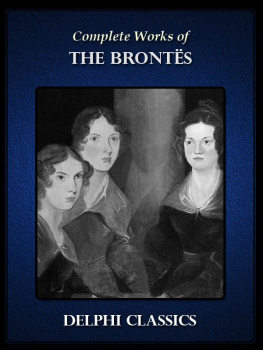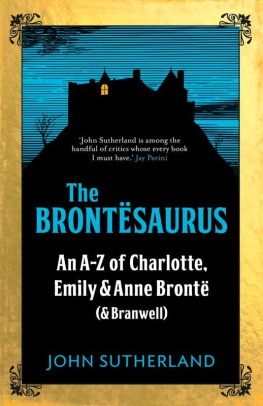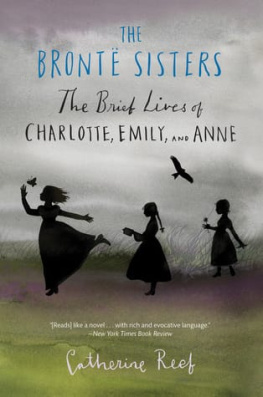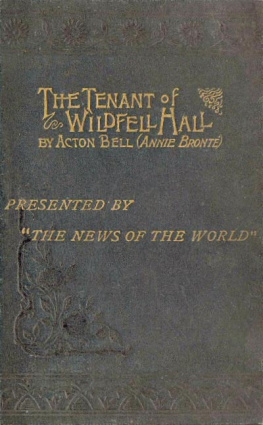

There are many people and organisations without whom this work would not have been possible, so alongside the support of family and friends I must give special thanks to the following people: Sophie Bradshaw, a pleasure to work with, and the team at The History Press; Julie Shaw and all at the Hollybank Trust (formerly Roe Head School), a wonderful charity that can be supported via www.hollybanktrust.com ; Sylvie Lain and Arthur Sansam; Dave Zdanowicz, for his stunning photography; Amanda White, whose love for the Bronts and other writers is reflected in her art; Mark de Luca, proprietor of Emilys by De Luca on the site of the Bront birthplace; Diana Chaccour, National Portrait Gallery; Sylvia Thomas, President of the Yorkshire Archaeological Society; Charles Chambers, the Vina Cooke Museum; and Kit Shorten, expert on the Moravian church in Yorkshire.
Many thanks also to the British Library, Leeds City Library, Leeds University Library, Bradford City Library, Royal & Pavilion Museums, Durham University, and Julie and Steve at Ponden Hall. Special thanks must go to the Bront Society, and especially Ann Dinsdale for her help and support. Final thanks, and without whom this labour of love really would not have been possible, to Anne Bront herself, the courageous woman whose work continues to bring joy to me and many others.
C ONTENTS


Shielded by my own obscurity, and by the lapse of years, and a few fictitious names, I do not fear to venture; and will candidly lay before the public what I would not disclose to the most intimate friend.
Agnes Grey
I t is 28 May 1849 in a room in Woods Lodgings, a guest house in the northern resort of Scarborough. A thin, pale-faced woman gazes out at the sea far below. Beads of sweat shine on her forehead as she tries to draw in one more painful breath. Watching on despairingly are her sister Charlotte and her friend Ellen. They are in tears, but the young woman smiles as best she can. After a lifetime of regrets and fears, punctuated by brief, golden moments of love and triumph, she is completely at peace. These are the last moments of Anne Bront. She is 29 years old.
A month earlier Anne had written to Ellen Nussey, stating that she wasnt afraid to die, but she regretted that she could not live longer, as she longed to do something good and worthwhile in life, even if little. Anne was dying, as she had lived, in total obscurity. Nobody who saw her could have guessed that she was the much talked about Acton Bell, whose novel The Tenant of Wildfell Hall had become such a cause clbre. Nor could they have guessed that the woman alongside her was the famed Currer Bell.
In her last days, Anne was confident that the literary success that she and her elder sisters, Emily and Charlotte Bront, had found in the last two years would be fleeting. The names of Acton, Currer and Ellis Bell would soon be forgotten, like marks in the sand that are washed away by an incoming tide. It did not trouble her: she was, after all, a woman who scorned fame and the trappings of success. Little did she know that over a century and a half later, she and her sisters would be loved and lauded across the world.
Anne, the youngest of the Bront sisters, was in many ways the most enigmatic. Quiet and thoughtful in real life, she could seem mysterious even to those closest to her. In a letter to W.S. Williams, one of her publishers, on 31 July 1848, Charlotte wrote of Anne, She does not say much for she is of a still, thoughtful nature, reserved even with her nearest of kin.
Nevertheless, Anne hid deep and powerful feelings within her and had led a life that was full of joys and sorrows, even though short of days. She was a woman who was always committed to the truth, however painful it could be to others.
Anne Bront has for too long been the forgotten Bront, an epithet that is unbecoming of her great talents as a poet and novelist. She deserves to be sought out by new readers and revisited by those who are already familiar with her work.
When we go in search of Anne Bront we inevitably meet with difficulties. All of her youthful prose writing, in itself a prodigious output, has been lost. Only five letters by Anne are currently known to exist, although she was a keen letter writer. Nevertheless we still have more than enough source material to construct a meaningful and accurate life.
Piecing together a biography of Anne Bront is in some ways like being a lawyer working on a case before the courts. There are lots of clues, if we choose to see them, and from these clues we can piece together a fuller picture of the truth itself. This may in some cases have to lead to supposition as to what Anne would have said, done or felt, but by examining the clues of her life we can do so with some degree of confidence, even certainty.
To a large extent we are reliant upon the testimony of others, most notably Charlotte Bront and Ellen Nussey, but this can be very revealing, particularly when we know how to read many of Charlottes opinions and pronouncements. The greatest evidence of all, however, is contained within Annes writing itself. Yes, these are works of fiction, but as every fiction writer knows, there will always be elements of truth contained within them. Whether an author is a first-rate writer like Anne or a tenth-rate scribbler, every book will contain pieces of the person who created it. To discard this is to wilfully misunderstand the art of creating prose and poetry. Anne particularly used her novels to unburden the feelings that she was normally so careful to hide. In Agnes Grey alone, in itself quite a slender novel, we find sixty instances that are drawn directly from her actual life. To examine Annes writing, then, is not only rewarding, it is fruitful too, although of course we must be careful to extract the facts from the fiction.
We can now embark upon a remarkable life story. To seek out the real Anne Bront, we must go back to the very beginning. Back twenty-nine years and four months before the scene that is playing out in Scarborough, to the village of Thornton, near Bradford, in the West Riding of Yorkshire.
Note
. Smith, Margaret (Ed.), The Letters of Charlotte Bront , Volume 2 , p.94
1

My father was a clergyman of the north of England; deservedly respected by all who knew him.
Agnes Grey
T he month of January 1820 was an exceptionally cold one in the north of England, and conditions were very hard for the workers of Yorkshires West Riding. Crops of wheat and corn had failed, peat farmers were left with nothing, and the moors and fields lay covered by a thick blanket of snow. Rivers and canals were frozen, and supplies of food and fuel were brought to a standstill.
The harvest of 1819 had been the poorest in memory, and the harsh January weather promised little respite in the year to come. People with little means and little hope were starving and freezing to death. Bodies were found in the streets, with nobody to mourn them. Families were left without breadwinners or broken up as men left the countryside and headed into the burgeoning new urban centres that offered jobs and at least a little hope for the future.
England was entering an age of increased automation, the Industrial Revolution was reaching its height and machines made by one were doing the work of many. It was a period of civil unrest, and discord hung in the air. Groups of people gathered together and plotted acts against the machines and the mill owners who used them. These men became known as Luddites, and the West Riding was a hotbed for them. They would break into factories at night, smashing machines before vanishing into the darkness, or they would intimidate mill owners and workers with threats that were sometimes bloodily carried out.
Next page
